The Hisense U7Q is one of the most interesting Mini-LED televisions in its price segment, clearly demonstrating that Hisense is beginning to make a mark in the market not only through its price-to-performance ratio but also due to its increasingly refined picture quality. Let's start with what truly impresses: the contrast and black levels are at a level that not long ago was unattainable in this price range. Combined with smooth tonal transitions, solid brightness, and a fast 144 Hz panel, the U7Q becomes a television that excels in both movies and gaming. Gamers will find almost everything they could expect here – variable refresh rate (VRR) support, automatic low latency mode (ALLM), very low input lag, and even 240 Hz in Full HD. All of this makes the U7Q compatible with both next-gen consoles and PCs. However, there are some weaker points. With HDR content, one might say: "untapped potential" – you might ask why? The television, due to its algorithms, dims small bright elements or over-emphasises them, which can ruin the viewing experience. There is also a lack of support for HGiG, a feature that would allow for better calibration of the console with the television regarding HDR. In summary, briefly – the Hisense U7Q is a very versatile and complete television that has its imperfections but makes up for them in many key aspects. For gamers, for the occasional movie viewer, for someone looking for good equipment for everyday use – it is one of the most cost-effective offerings in 2025. You just need to know what compromises you are signing up for – and then it will be hard to be disappointed.
- Matching (Score)
- Our verdict
- TV appearance
- Where to buy
- Contrast and black detail
- HDR effect quality
- Factory color reproduction
- Color reproduction after calibration
- Smoothness of tonal transitions
- Image scaling and smoothness of tonal transitions
- Blur and motion smoothness
- Console compatibility and gaming features
- Input lag
- Compatibility with PC
- Viewing angles
- TV efficiency during daytime
- Details about the matrix
- TV features
- Apps
- Playing files from USB
- Sound
Hisense U7Q vs LG QNED93A / QNED90A
Direct compare
U7Q / U78Q
QNED93A / QNED90A

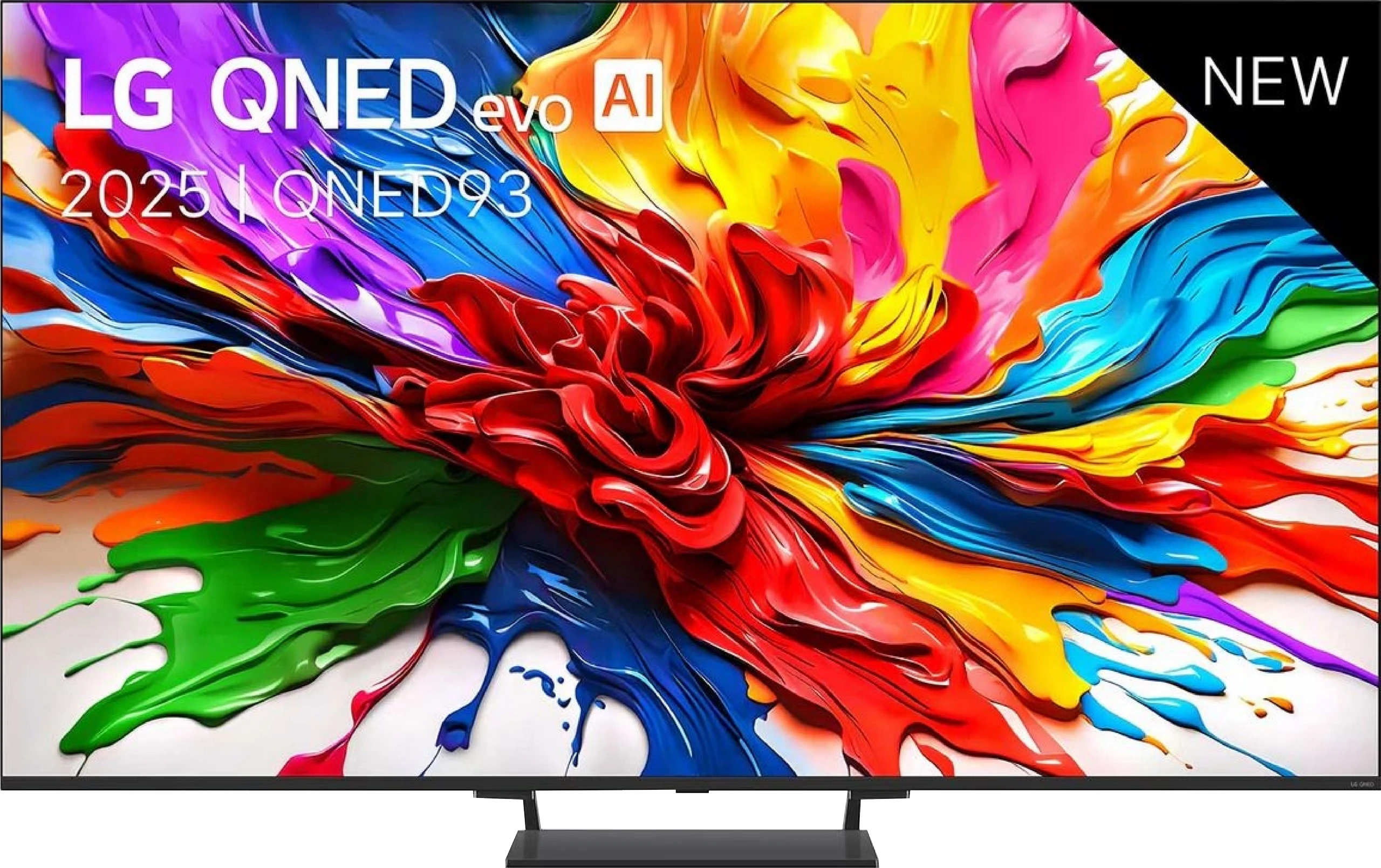
Panel type: LCD VA
Resolution: 3840x2160
System: VIDAA
Model year: 2025
Complete the survey to find out the result

Panel type: LCD VA
Resolution: 3840x2160
System: WebOS
Model year: 2025
Complete the survey to find out the result

Overall rating
7.2
7.3
Movies and series in UHD quality
6.7
6.8
Classic TV, YouTube
6.8
6.9
Sports broadcasts (TV and apps)
6.5
6.9
Gaming on console
8.0
8.6
TV as a computer monitor
8.6
8.6
Watching in bright light
6.2
6.2
Utility functions
8.9
8.2
Apps
7.7
9.1
Sound quality
7.2
6.9
Complete the survey to find out what fits your preferences
Advantages
Great contrast and deep blacks
Very good fluidity of tonal transitions (close to reference level)
High brightness
Support for 4K 144 Hz and even 240 Hz in Full HD
VRR, ALLM, G-SYNC – a complete package for gamers
Low input lag
Pleasant sound with light bass
Many classic TV features built into the VIDAA system
Quite good contrast
High number of dimming zones
Good HDR brightness (around 1400 nits)
Wide colour gamut coverage (around 96% DCI-P3)
144 Hz mode and full set of gaming features (HDMI 2.1, VRR, ALLM, G-Sync, FreeSync, HGiG, Game Bar)
Low input lag (7 ms at 120 Hz)
Good compatibility with PC, including 144 Hz and clear fonts,
WebOS with a rich assortment of apps and voice control
Magic Remote
Quite effective upscaling and image processing tools - it will work great for older content such as antenna TV or YouTube
Disadvantages
No support for HGiG (makes setting HDR on consoles difficult)
Brightness management issues
Poor viewing angles – typical for VA panels
Closed VIDAA system – lack of certain applications
The local dimming algorithms require refinement
Very average viewing angles
Dolby Vision does not offer a significant improvement over HDR10
Our verdict
The LG QNED93A is a television that, at first glance, appears to be a solid step forward compared to previous LCD models from this brand. On paper, we get quite a lot: a significantly larger number of dimming zones, 144 Hz refresh rate for gamers, support for all HDR formats, including Dolby Vision, and WebOS with a new Magic remote, which remains one of the most convenient control systems. The QNED93A shines particularly in gaming applications. Four full-fledged HDMI 2.1 ports allow for connecting consoles and PCs without any restrictions, and the low input lag remains consistent at both 120 and 60 Hz. For PC users, an additional advantage is the 144 Hz mode and full compatibility with G-Sync and FreeSync. Therefore, it can be confidently said that in terms of gaming features, the QNED93A holds its own against the competition. Another strong point is WebOS. LG's system has long been regarded as one of the most user-friendly in everyday use, and this is confirmed here. Everything is clear, and the Magic remote allows for controlling the television like a mouse pointer – quickly and intuitively. Brightness can also be considered a plus. At its peak, it managed to achieve results close to 1400 nits. This is sufficient for the picture to remain vibrant in brighter rooms, and for special effects in films or games to look convincing. The image processor handles scaling of older content well – television or films in lower resolution appear clearer and sharper than on many competing screens.
However, it cannot be denied that the biggest problem with the QNED93A lies in the local dimming algorithms. In scenes full of black, the screen can dim significantly, causing many details to simply disappear. The effect is such that contrast appears better at first glance, but at the cost of information that should be visible. An additional problem is the Dolby Vision mode, which usually improves certain aspects of screens, yet in this case, it makes little difference. The differences between dynamic and static metadata literally have to be searched for with a magnifying glass. This is simply disappointing because the hardware itself, with its number of dimming zones and stronger backlighting, provides grounds for a better result. So, who is the LG QNED93A for? It is a television that works excellently as a home entertainment centre, especially if you're considering gaming on a console or PC. In everyday television viewing and films in well-lit conditions, it also delivers a lot of satisfaction due to its high brightness and decent image processor. However, one must accept that in scenes with a lot of black and full HDR utilisation, this model does not match its competitors. LG has shown that it can create a very solid LCD screen, but it is also evident that not everything has been refined as well as in their OLED televisions.
TV appearance




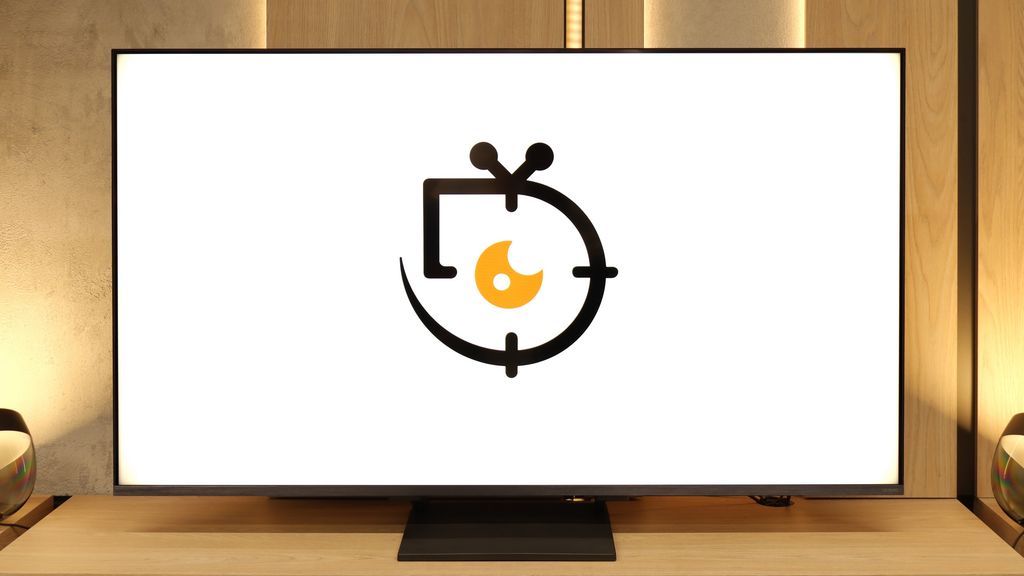
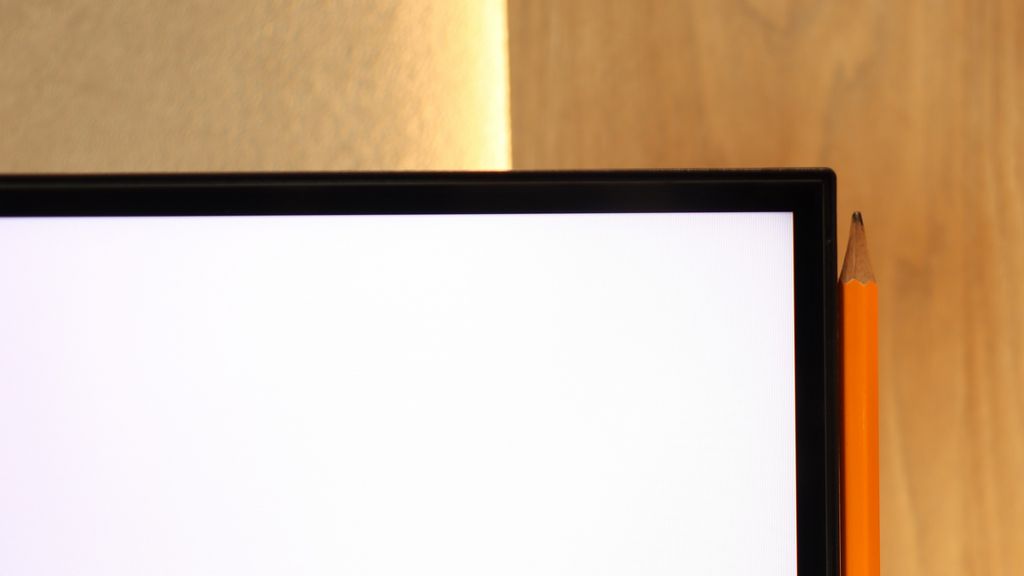
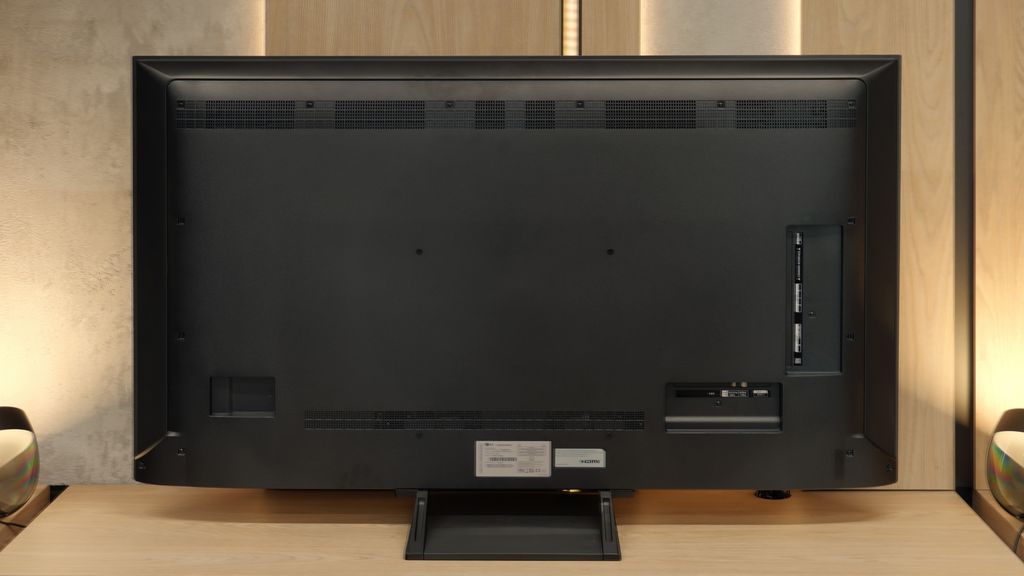
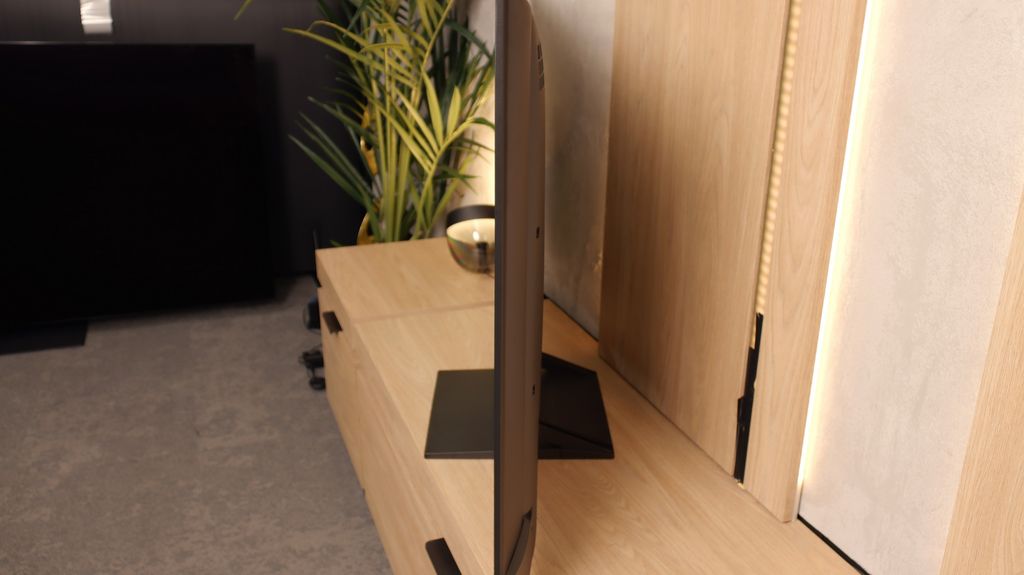
Contrast and black detail
7.5/10
7.3/10
Local dimming function: Yes, number of zones: 220 (10 x 22)
Local dimming function: Yes, number of zones: 308 (14 x 22)
Contrast:

Result
278,000:1

Result
28,800:1

Result
11,100:1

Result
10,800:1

Result
6,250:1

Result
130,500:1

Result
30,950:1

Result
15,250:1

Result
6,750:1

Result
4,600:1
Halo effect and black detail visibility:

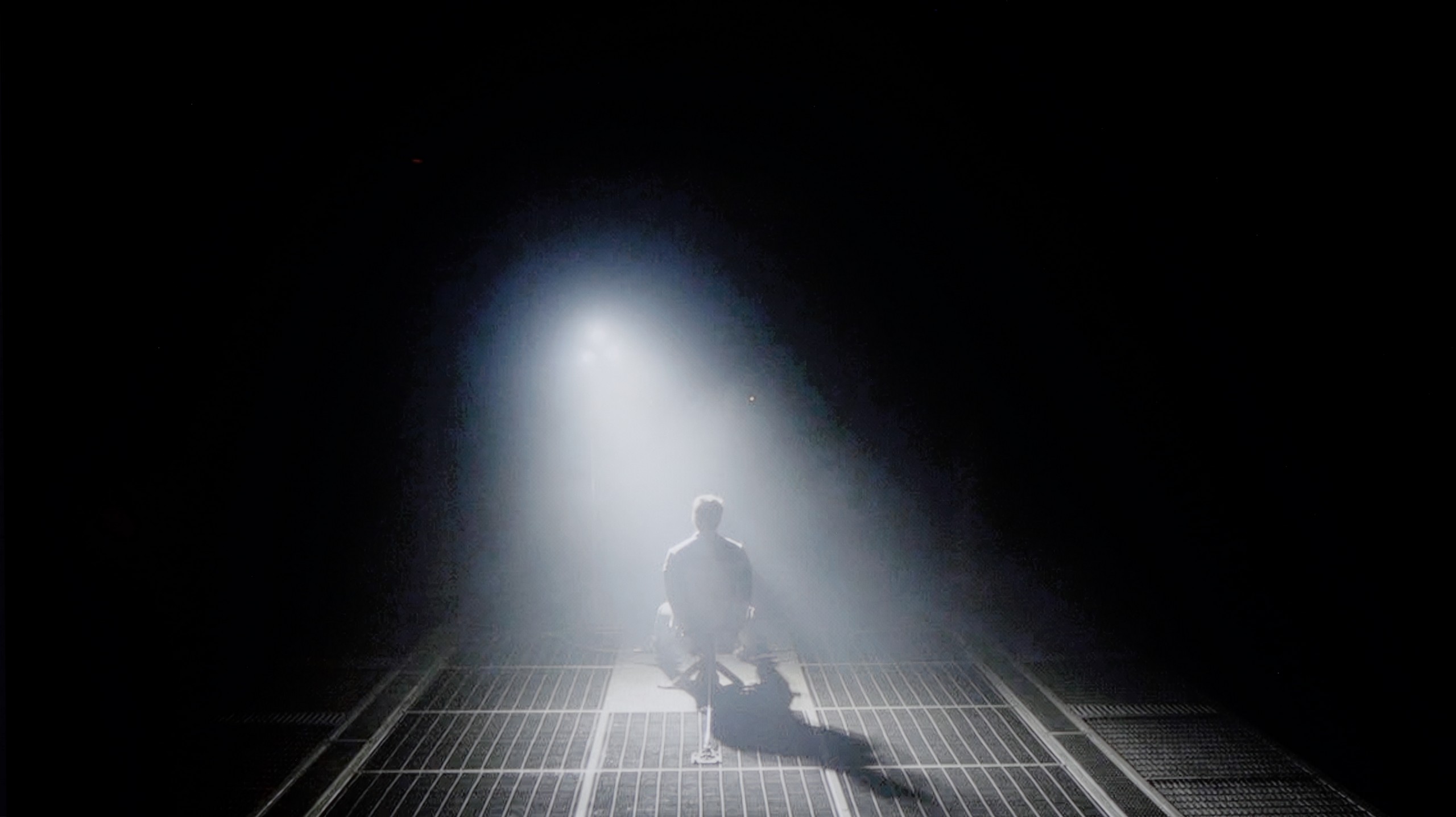
The U7Q is a television with Mini-LED backlighting – just like the PRO version. The difference? The version without the suffix simply has fewer dimming zones. In our 65-inch model with a VA panel, we counted 220 of them. And although this doesn't make as much of an impression as in the U7Q PRO, it still looks very good on paper for this price range. Alright, but how does it perform in practice? Surprisingly well. The contrast in the U7Q can reach as high as 300,000:1, which gives a really solid black effect. In many scenes, it's hard to find fault – the picture has depth, and the highlights are well separated. Of course, Mini-LED is not OLED – so there are certain limitations. In very challenging scenes with a lot of dark details, the television sometimes either "eats" them, leaving a nice black, or slightly brightens the background, which can cause a halo effect. This is normal in this technology, and one must take it into account. Despite these minor drawbacks – the contrast in the U7Q performs really well.
We examined the 55-inch version of the LG QNED93A, equipped with a high-contrast VA panel. However, in the case of Mini-LED televisions, it is not just the panel itself, but primarily the number and operation of local dimming zones that determine the final effect. In this model, we counted as many as 308 zones, which already looks impressive from the start. For comparison, last year's QNED91T in the 65-inch variant had only about 160. The difference is enormous and shows that LG has made a serious step forward in this technology. On paper, it looks great, but practice quickly cools the enthusiasm. The contrast in the QNED93A can indeed be impressive – bright elements are clearly separated from blacks, and in many scenes, the depth of the image truly pleases the eye. The problem is that despite such a significant improvement in the backlighting design, the results are not much better than in last year's model. The algorithms controlling the dimming can be too aggressive. This is especially noticeable in darker sequences, where the screen dims to such an extent that subtle details disappear from view. Many viewers will appreciate the deeper blacks, but it is hard not to notice that this comes at the expense of the director's intentions. The most problematic are scenes with many small, bright elements. It is then that the typical halo effects, meaning glowing outlines, characteristic of LCD with local dimming zones appear around them. This phenomenon does not completely ruin the experience, but it reminds us that even with an increased number of zones, local dimming still has its limitations. Ultimately, the contrast in the QNED93A can be considered good, but we have the impression that the manufacturer did not pay enough attention to optimising the new model in terms of blacks and contrast.
HDR effect quality
4.6/10
5.8/10
Luminance measurements in HDR:

Result
521 nit

Result
160 nit

Result
351 nit

Result
98 nit

Result
674 nit

Result
1330 nit

Result
219 nit

Result
678 nit

Result
160 nit

Result
1016 nit
Scene from the movie “Pan” (about 2800 nits)


Scene from the movie “Billy Lynn” (about 1100 nits)


Static HDR10


Dynamic: Dolby Vision
Dynamic: Dolby Vision


HDR luminance chart:
LG QNED93A / QNED90A
HDR luminance
Hisense U7Q
HDR luminance
Since the algorithms responsible for blacks are performing quite well, we expected a similarly good effect regarding brightness and overall HDR quality. Unfortunately – here we have to disappoint you a bit.
The U7Q is a sufficiently bright television – under the best conditions, it can achieve around 800 nits, which indeed impresses on some scenes, especially in scenes like those from the film The Meg. Bright areas can shine, and the HDR effect is noticeable. The problem arises when there are very small, bright elements on a dark background – for example, in Sicario 2 or in the second scene from the film Life of Pi. In such moments, the dimming algorithms work too aggressively. Yes, the blacks look great then, but the brightest points can almost completely disappear, causing the HDR effect to vanish and the details to be barely visible. It's just the nature of this technology in this price segment.
As a consolation, it's worth mentioning that the U7Q is marketed as QLED (in practice, a PFS layer is used, which works very similarly), and it is indeed capable of displaying a wide colour palette – a DCI-P3 coverage of around 94% is a very good result for this class.
Although the number of local dimming zones in the LG QNED93A has not directly translated to noticeably better contrast, it is hard to deny one thing about this model – it is brighter than its predecessor. In synthetic tests, we recorded values around 1400-1500 nits, and more importantly, these results are reflected in real film scenes. In full-screen sequences flooded with white or bright lights, the screen could maintain high luminance, which created a truly decent amazing HDR effect. Unfortunately, where the television could showcase true class, that is in scenes requiring precision, all the magic dissipates. The dimming algorithms, which we mentioned earlier, operate so aggressively that small bright objects – such as distant lights, stars, or the moon – can almost completely disappear. A glance at the test scenes from the film Pan or Sicario 2 (screens 2 and 4) shows how subtle details are dimmed to the limits of their visibility. It's a pity, as a greater number of zones could theoretically have led to significantly better results. Fortunately, there are also strengths. The QNED93A performs well in terms of colour gamut coverage, achieving around 96% of the DCI-P3 standard. As a result, colours in films appear vivid and full, and the picture does not lose intensity even in more demanding scenes. Therefore, one could say that the HDR in this model is solid, although the underdeveloped local dimming algorithms hinder its full potential.
Factory color reproduction
6.3/10
6/10


Factory Mode
After calibration
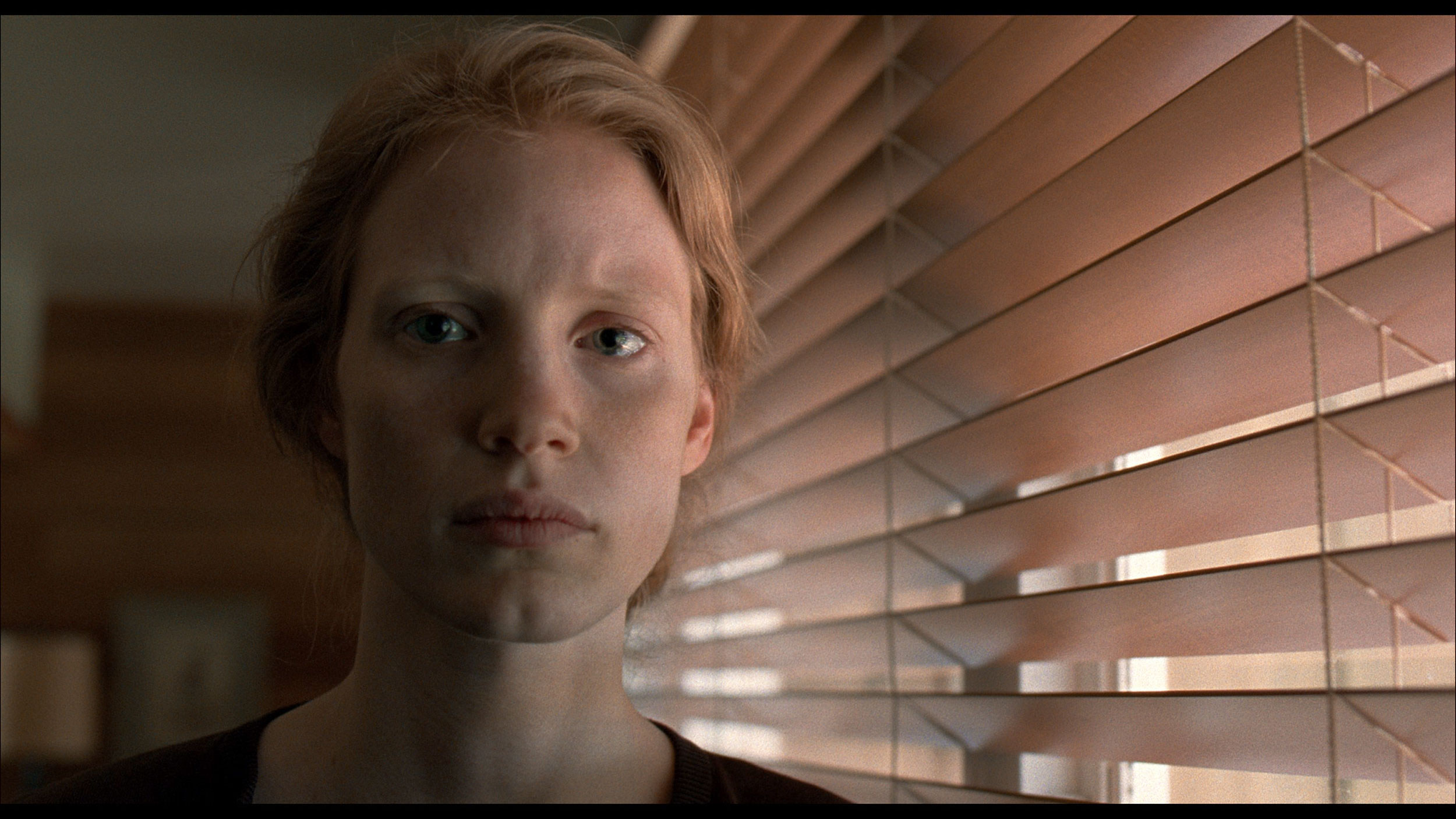
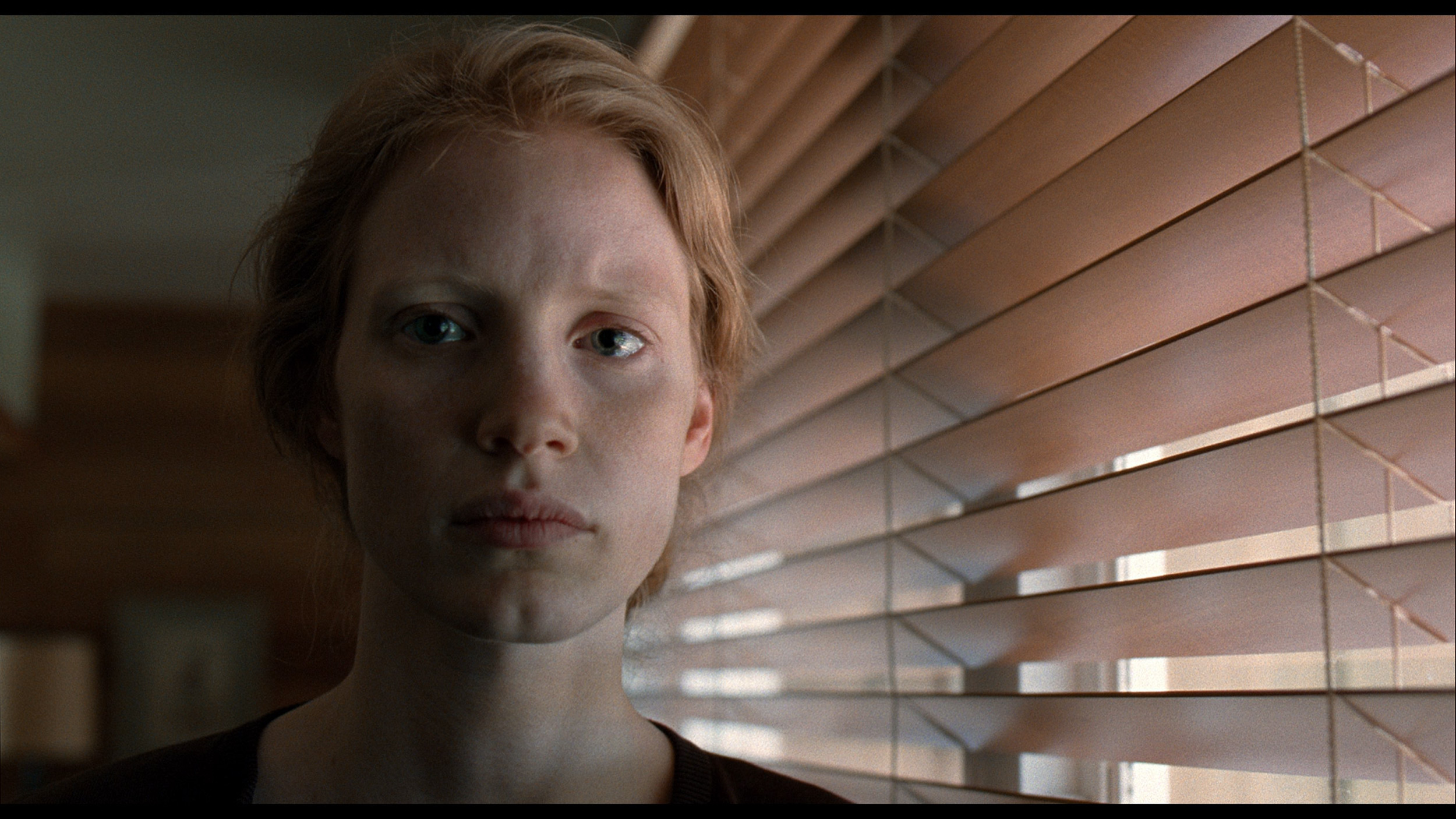
Factory Mode
After calibration
We tested the U7Q in the best possible picture mode, which is Filmmaker Mode. This is the mode that is supposed to provide the most "filmic" and creator-intended experience – right out of the box. Unfortunately… even this professionally sounding name does not guarantee a perfect picture.
In our unit, the problem lay in the incorrectly set white balance. Both in HD and 4K content, the picture had too much blue and red, which caused the screen to take on a slightly rosy tint. It didn't look terrible, but it was noticeable – especially in bright scenes and white backgrounds. This alone could perhaps be forgiven, but the biggest problem is managing brightness in HDR content. The EOTF curve from measurements confirms what we saw earlier during scene tests: the television can overly darken the smallest bright elements, causing them to nearly disappear, or on the contrary – excessively brighten the brightest ones, which affects the naturalness of the picture.
In filmmaker mode, the colour reproduction on the QNED93A was relatively accurate, although there were some reservations. In SDR content, the white balance was shifted towards warmer tones, which gave the screen a slight yellowish tint overall. The gamma, in turn, led to a slight brightness increase, making the image appear somewhat less natural, especially in scenes requiring precise shading (this is clearly visible in the comparison photo). This is not a problem that immediately stands out to every viewer, but more discerning individuals may feel that the image deviates from the aesthetics intended by the filmmakers. In HDR materials, the situation was somewhat different. The white balance, in this case, was quite good, ensuring that the whites neither leaned towards pink nor unwanted green hues. However, managing brightness turned out to be an issue. An analysis of the EOTF curve revealed that at certain moments, the television could be noticeably too dark where it shouldn't be, losing some detail and lowering the realism of the scenes. This spoiled the reception of HDR effects, which were theoretically supposed to make the biggest impression. For this reason, we decided to carry out calibration.
Color reproduction after calibration
7.4/10
7.8/10




Thanks to specialised tools, we managed to correct the colour quality in SDR content to nearly perfection. In materials with lower dynamic range, the delta E errors dropped below 0.5, which can be regarded as an almost reference result. The picture on television, YouTube, or classic Full HD looks really very good after calibration. Alright – but where did we not manage to improve the image so easily? Primarily, it concerns HDR quality content. Although we managed to somewhat 'tame' the white balance and eliminate pink tints in most scenes, unfortunately, we no longer had full control over brightness management. We set the local dimming settings according to the best observations – SDR: Medium, HDR: High – but the U7Q still did everything a bit its own way. There were still cases of excessive dimming or brightening of details that calibration simply could not eliminate. And although the overall reception of the content is significantly better, one must reckon that the U7Q will always have something to say at the end with an 'but'.
After professional calibration, the Filmmaker mode on the QNED93A has improved primarily in areas that matter most on a daily basis. We managed to correct the white balance and eliminate the yellowish tint in SDR content, which is what we watch most often – television, streaming services, or standard quality films. As a result, the colours look natural and pleasant, making the overall experience much more comfortable. We also made adjustments in HDR mode, but here the biggest issue turned out to be the EOTF curve. Although LG offers some flexibility in the settings, the television still manages brightness on its own terms. It is evident that the local dimming algorithms are not fully refined and can ruin the viewing experience by darkening parts of the image at inappropriate times. Nevertheless, it is worth opting for calibration of this model, especially the mode intended for everyday viewing.
Smoothness of tonal transitions
9.9/10
8/10












The U7Q performs remarkably well when it comes to tonal transitions – we can confidently say that it is at an almost reference level, which is why this television receives one of the highest possible ratings in this category from us. Colour blending is smooth, clean, and without visible bands. In the majority of scenes, everything looks simply perfect, and any minor imperfections may only appear in very specific shots – although we hardly noticed any during our tests.
The fluidity of tonal transitions in the LG QNED93A is truly impressive. In most scenes, there are no artificial colour separations or banding effects visible. The dark shots are particularly surprising in a positive way – it is precisely in these that many televisions struggle, yet here the image remains smooth and coherent. In brighter segments, one can note subtle colour blending, however, they are not pronounced enough to significantly distract the viewer. During testing, we encountered a clear issue with DSE, or the so-called "dirty screen" effect. On our unit, the phenomenon was strong enough that in bright scenes, the corners visibly darkened, giving the impression of vignetting. This may be a flaw of the test unit, but during intense viewing, we found it hard to overlook.
Image scaling and smoothness of tonal transitions
6/10
7.8/10
Smooth transition function

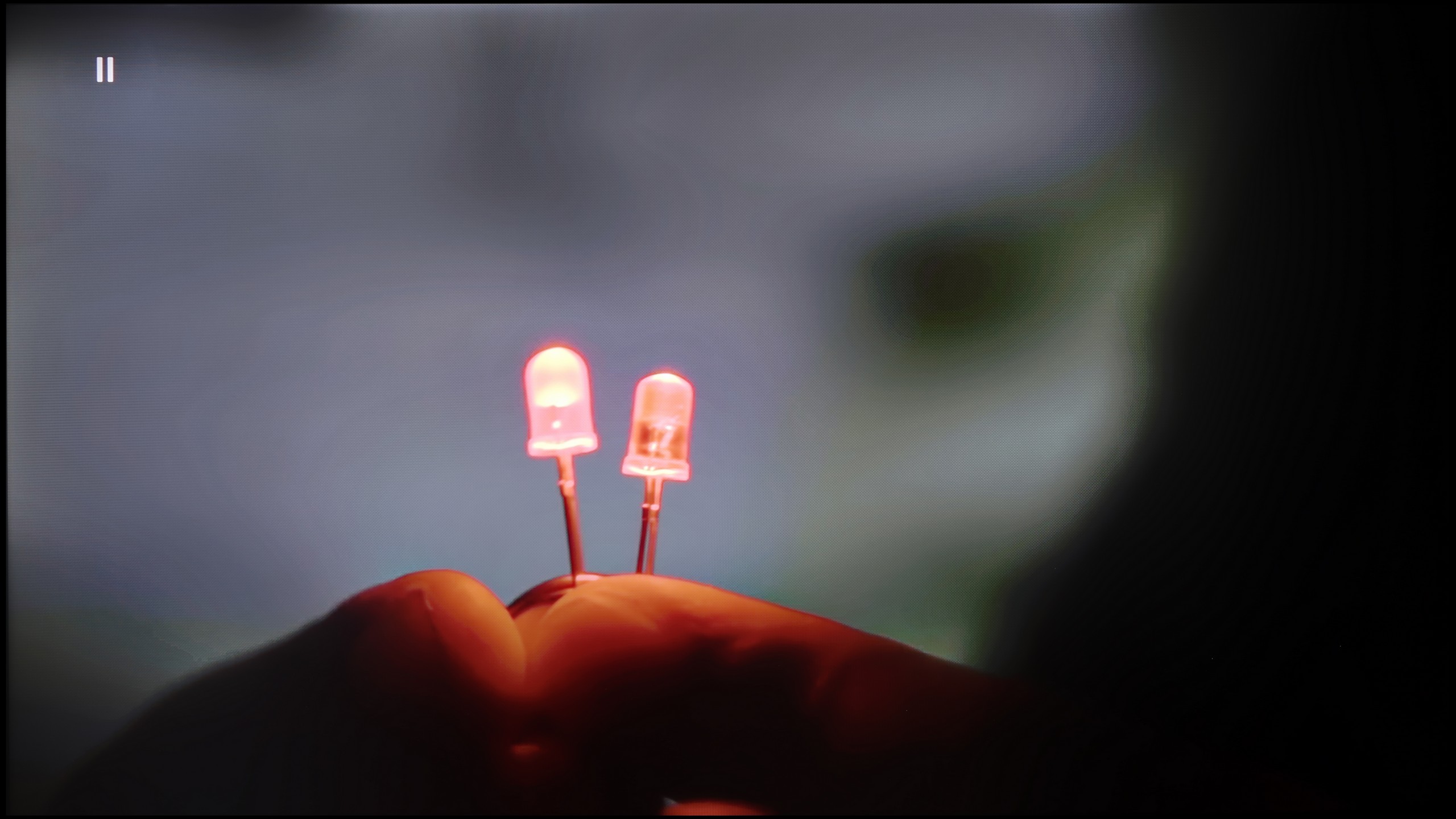
Image without overscan on the SD signal


There are situations where we would like to smooth out tonal transitions a bit, especially in older materials – those with limited source quality. The U7Q is equipped with a feature called "Smooth and Gradient Image," but unfortunately... it works very poorly. In the "Low" option, the effects are practically unnoticeable, and other settings smooth details but do not improve tonal transitions. The only positive aspect is that the feature does not interfere with film grain, so it does not ruin the natural structure of the image.
Fortunately, upscaling content performs quite well. The image is not excessively sharpened, and there is no artificial clarity – and although it is known that this is not the level of high-end televisions, the U7Q handles displaying really old content in a completely acceptable manner without any issues.
The LG QNED93A proves to be a very solid television for everyday use. Its image processor handles scaling extremely well, which means even older films or terrestrial television benefit from increased sharpness and detail. During the screening of "The Godfather," it is clearly visible how upscaling retrieves additional details from the image – the faces of the characters and the texture of their clothing appear much clearer than in the original material.
The digital image processing also deserves praise. The television is equipped with a function for reducing unwanted colour banding and screen irregularities. It works best in the "Medium" setting – subtly smoothing tonal transitions without excessively interfering with the image. As a result, the natural film grain is preserved, and the screen does not appear artificially smooth. It is possible that in some scenes slight colour banding can still be observed, but in practice, the effect is more beneficial than with a stronger intervention from the algorithm.
Blur and motion smoothness
7.5/10
7.9/10

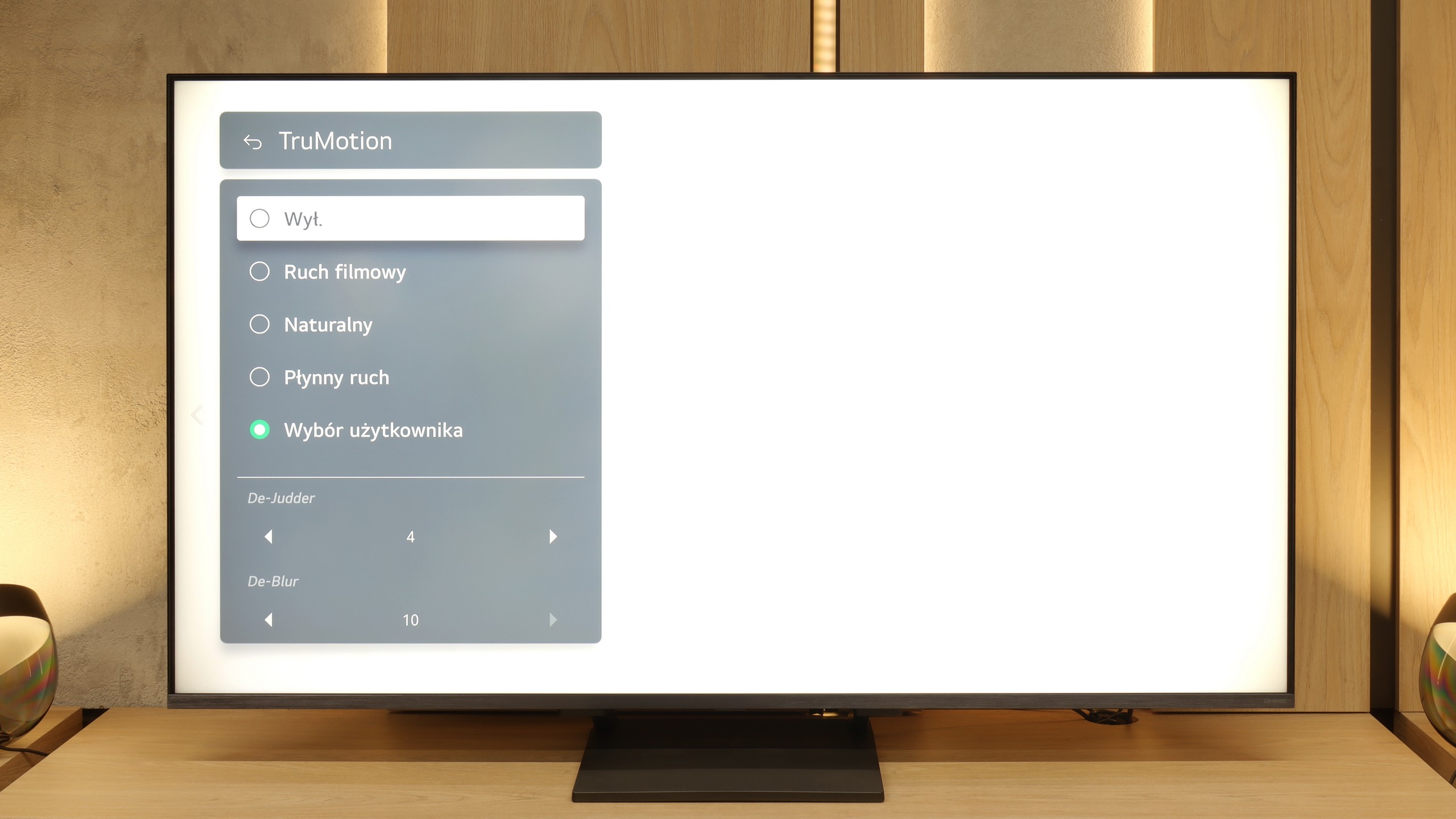
Blur (native resolution, maximum refresh rate):






Blur (BFI function enabled):



Image flickers in this mode



Smużenie (1080p 240Hz):



Smużenie (4K@144Hz):


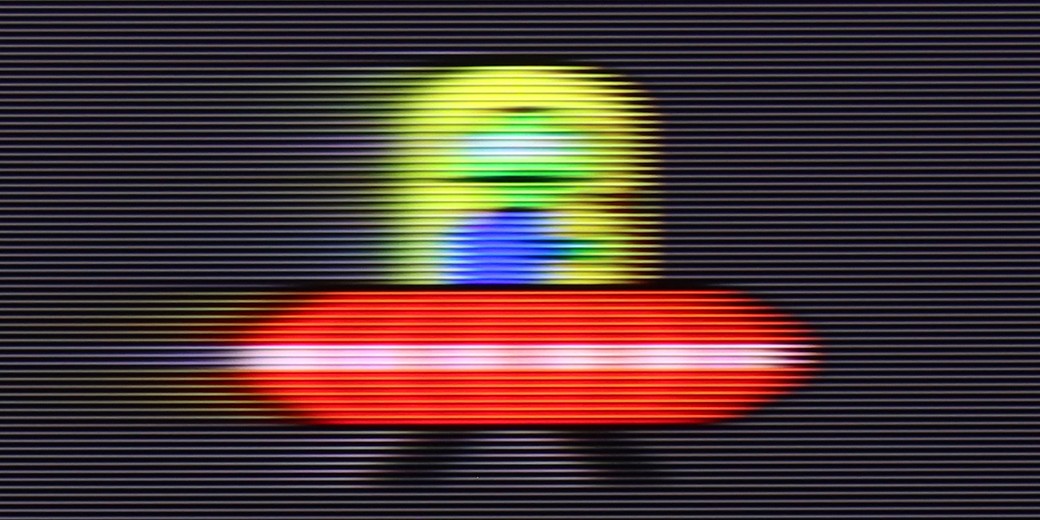
U7Q is indeed a very fast television, just like its more powerful version "PRO". At a resolution of 4K, it supports up to 144 Hz refresh rate, and if someone wants even more – in Full HD, you can achieve up to 240 Hz! This will mainly benefit PC gamers, but it is worth appreciating – it is a rarely seen feature in this price segment. Right from the start, it is clear that the U7Q has been designed with dynamic content in mind, such as games or sport. In films, we are not left "out in the cold" either – the U7Q offers an "Ultra Motion Smoothness" feature, where using two sliders you can adjust whether you prefer a smoother, theatrical image or something closer to a cinematic style with a visible film frame. It is good that, as with most manufacturers, we have a choice here as well and can adjust it to our own preferences.
The LG QNED93A is equipped with a 144 Hz panel. This is primarily a nod to gamers, but the fact that higher refresh rates are increasingly making their way into televisions can be viewed positively. In everyday viewing, 120 Hz remains key, and in this respect, the QNED93A performs well. The manufacturer also provides the option to adjust the picture using the TruMotion system – the De-Judder and De-Blur sliders allow you to choose between a cinematic motion character with visible frames and a complete smoothing with theatrical motion.
Console compatibility and gaming features
8.5/10
9.8/10
- ALLM
- VRR
- VRR range48 - 240Hz48 - 144Hz
- Dolby Vision Game Mode
- Correct implementation of HGIG
- 1080p@120Hz
- 1440p@120Hz
- 4K@120Hz
- Game bar

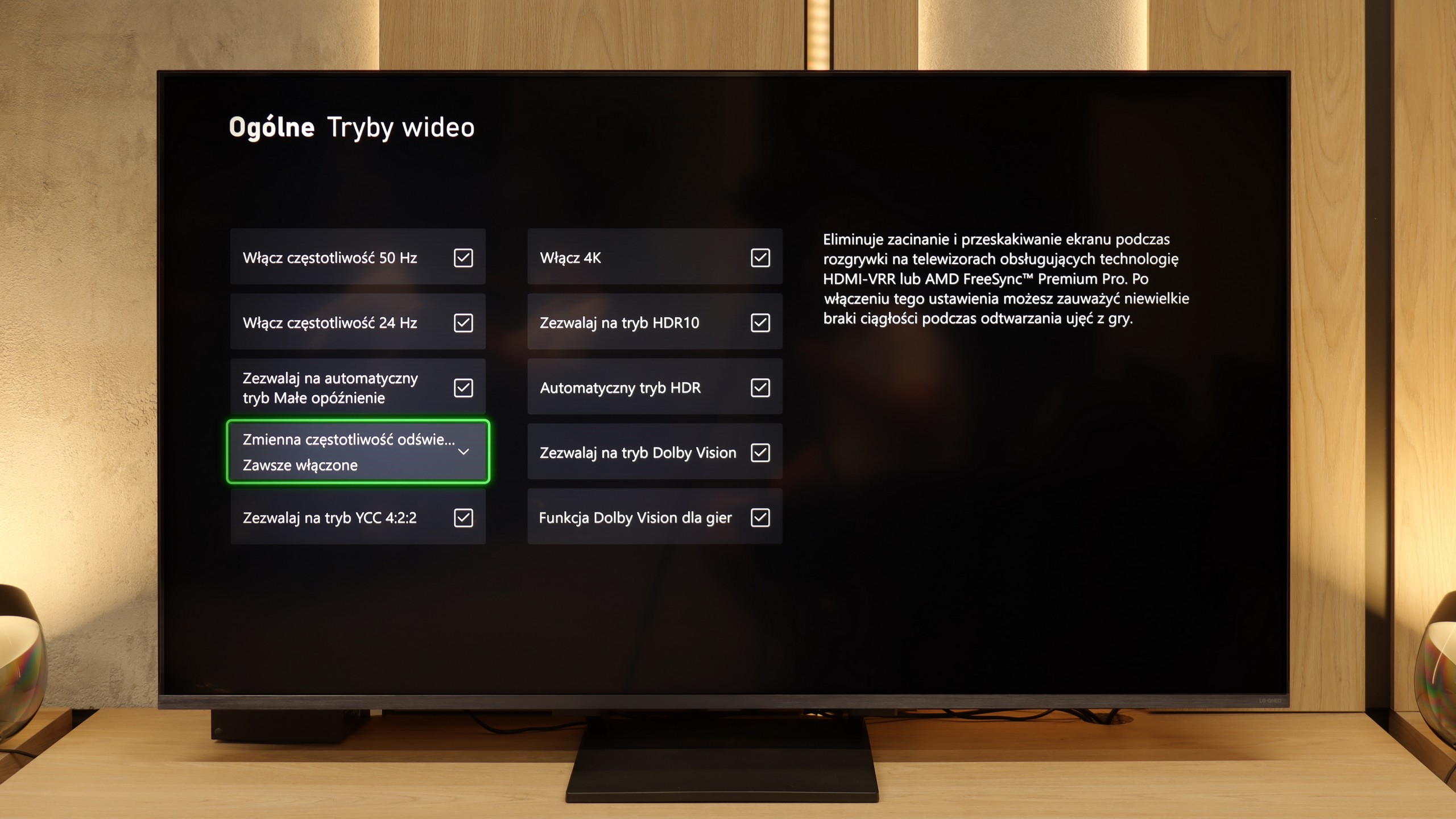

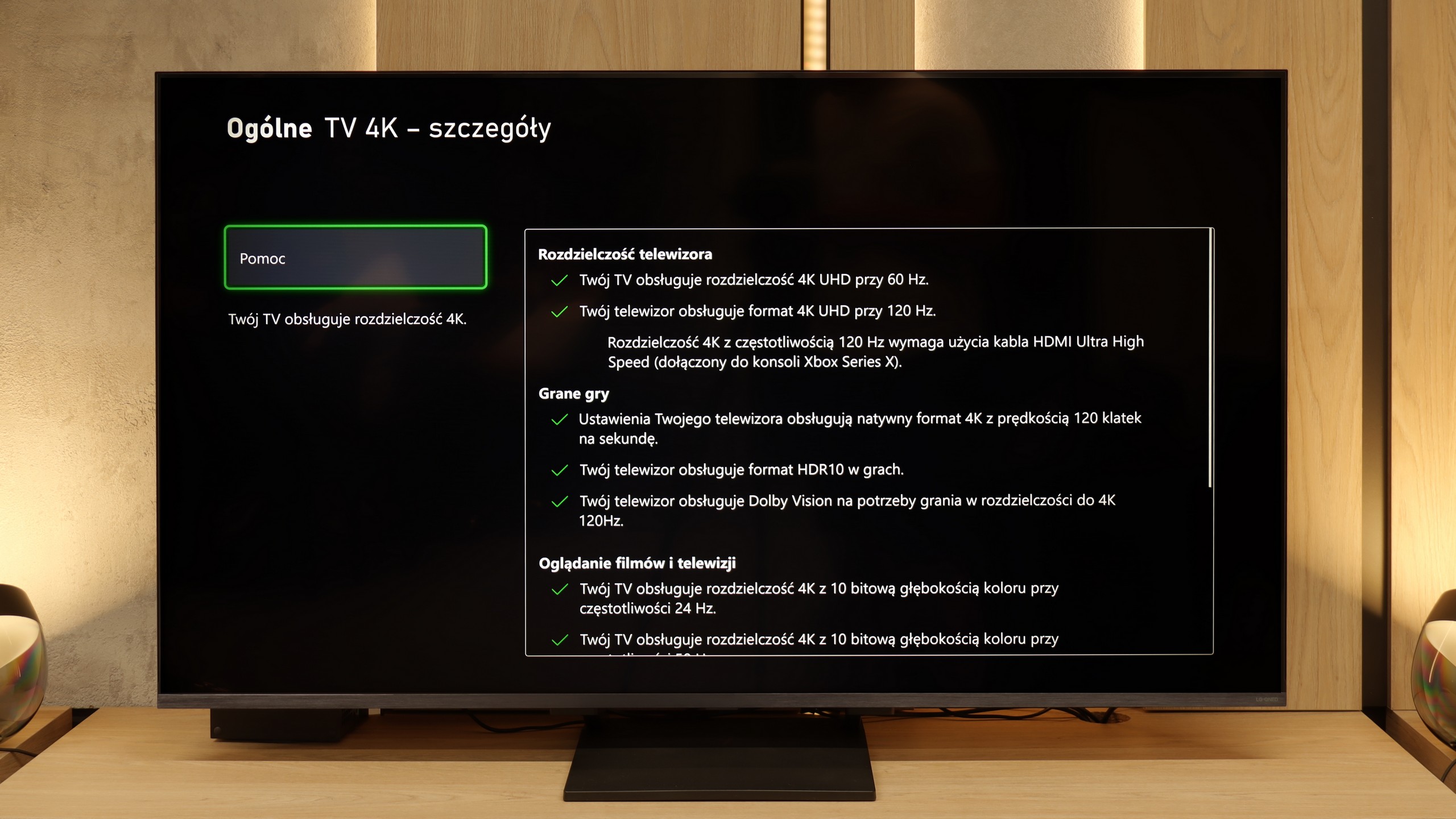

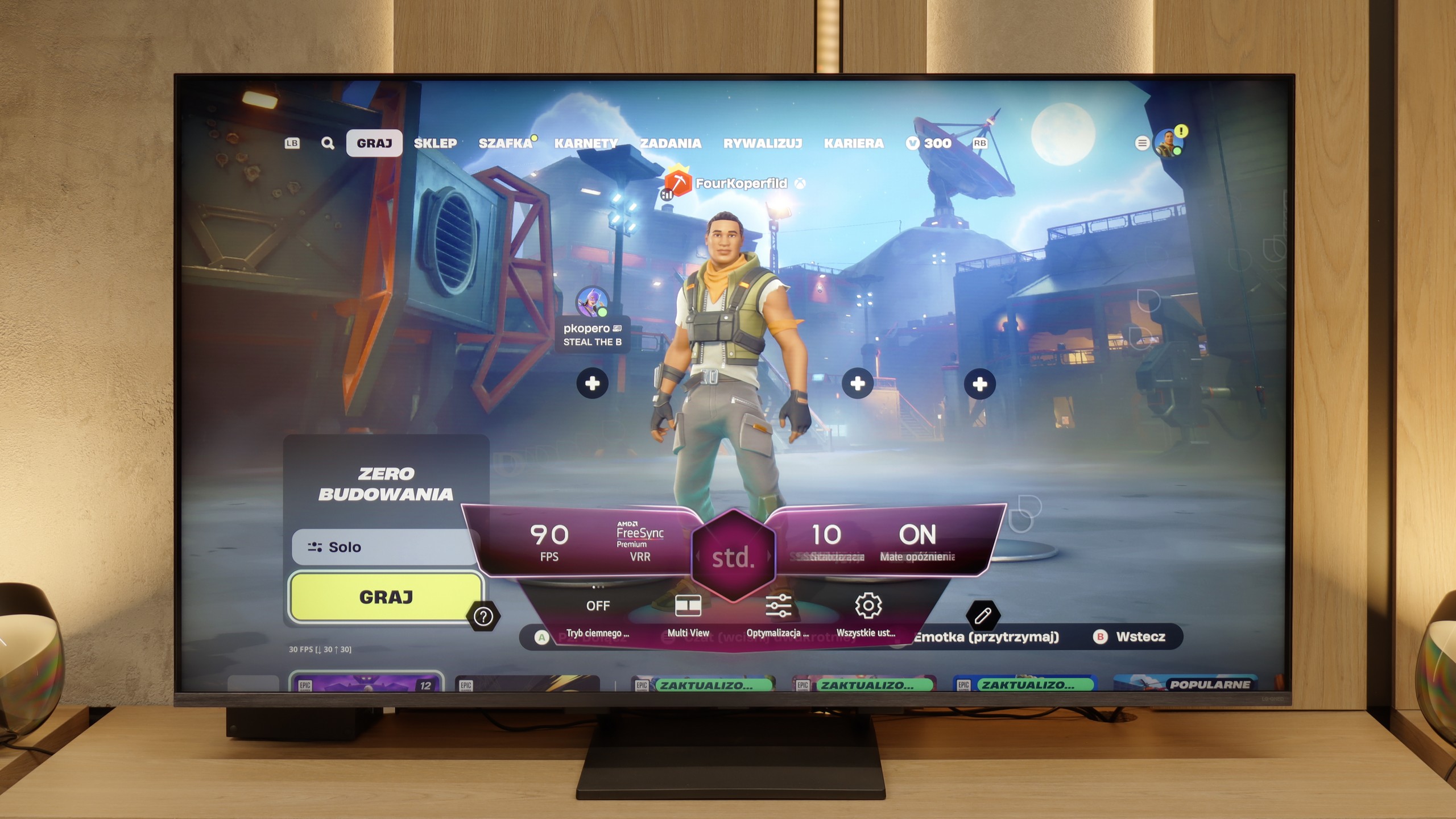

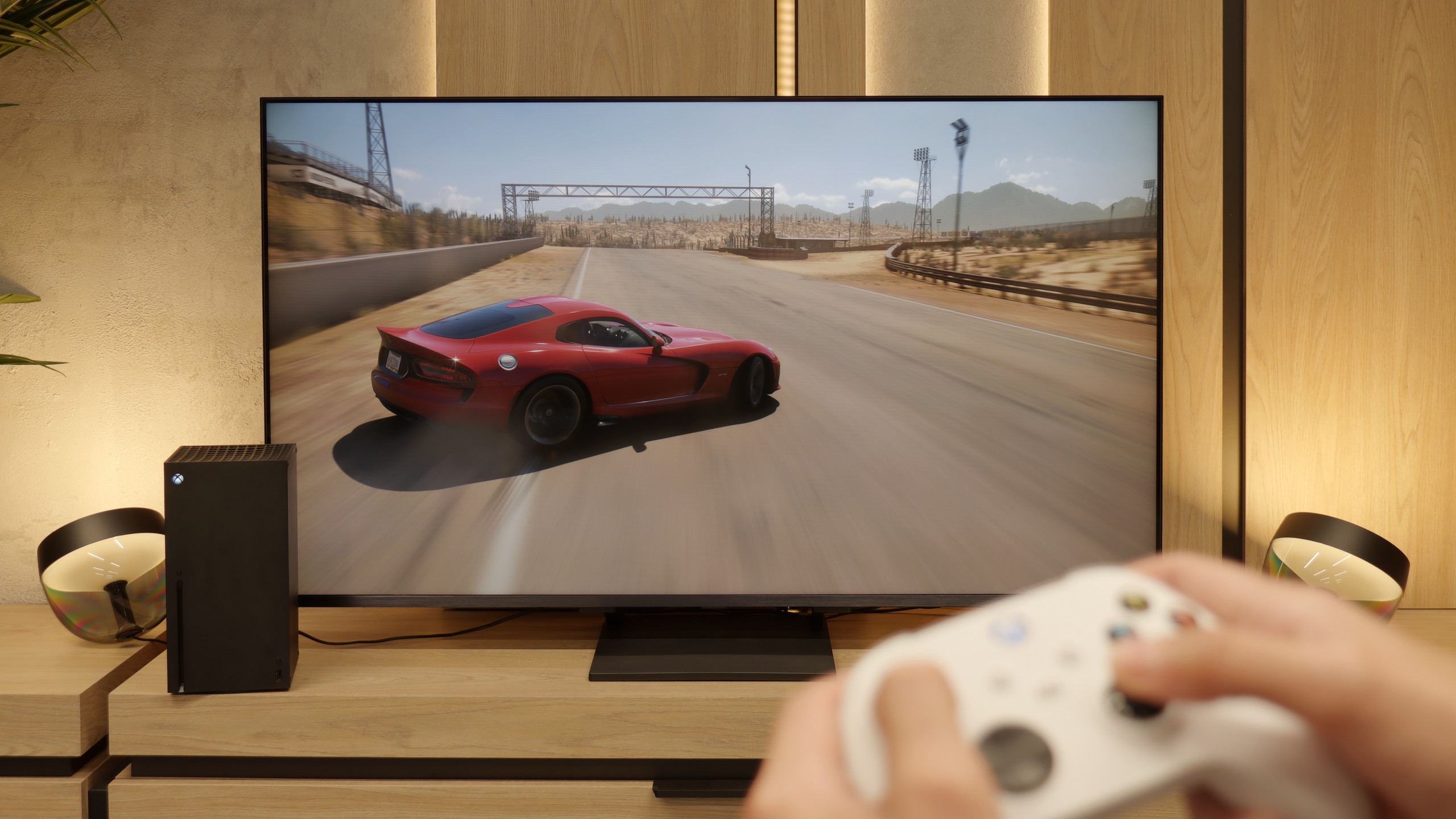
The Hisense U7Q is a television designed with gamers in mind – and this is immediately evident from its gaming capabilities. It has practically everything you could wish for: variable refresh rate (VRR) – check, automatic game mode (ALLM) – check, and on top of that, high refresh rates of up to 240 Hz in Full HD and support for various resolutions, not just 4K. This is truly a great set of features that makes the U7Q perform well both in fast-paced first-person shooters on consoles and in more demanding titles on PC. Of course – as with most Hisense models – there is a lack of proper implementation of the HGiG feature. It's a shame because HGiG allows console brightness to be matched to a specific television, which in practice makes displaying HDR games according to the creators' intent much easier. Without this, you simply have to reckon with certain limitations in the final HDR image in games.
LG QNED93A is a television that has undoubtedly been prepared with gamers in mind. Right from the outset, we get a complete set – all four HDMI ports operate in standard 2.1, so regardless of whether we connect a console, PC or amplifier, we can be assured of full compatibility. This is important, as many manufacturers still limit themselves to two ports, and here nothing hinders the entire equipment from having maximum capabilities. There is also an automatic game mode (ALLM), which automatically switches the television to the appropriate settings when the console is turned on, as well as variable refresh rate (VRR). This ensures the picture doesn't stutter or jerk, even when the frame rate drops – whether in dynamic shooters or during races.
The 144 Hz panel gives an additional advantage in computer games. While 120 Hz is sufficient for consoles, in the case of PCs, the QNED93A allows for even more – every movement, every glance to the side is refreshed faster, and this makes a difference, especially in e-sports. The manufacturer also considered HDR in gaming – the television supports the HGiG mode, which are guidelines to ensure that the lighting effects are exactly as the game developers intended. To top it off, we get Game Bar – a special information bar that appears on the screen, showing parameters in real-time. You can monitor the frame rate, active VRR functions, or the level of input lag. This solution is useful not only for settings enthusiasts but for anyone who wants to quickly check what mode the television is operating in and whether everything is working as it should.
Input lag
9.7/10
9.8/10
SDR
HDR
Dolby Vision
The input lag on the U7Q is really impressive. With 120 Hz content, we measured around 9 ms, and with 60 Hz – around 17 ms. These are exceptional results that make the television excellent for even dynamic games requiring quick reactions. It's hard to criticise anything here. Of course, as is often the case, the Dolby Vision mode in games seems to be a bit slower compared to classic SDR or HDR. This will be particularly noticeable for users of Xbox Series X/S consoles, which are the only ones supporting Dolby Vision Gaming. Fortunately, the input lag remains below 30 ms, so in practice, this is still an acceptable level even for more demanding gamers.
The LG QNED93A has nothing to be ashamed of when it comes to latency. The television responds instantly to our actions, as seen in the initial tests with the controller in hand. In 120 Hz mode, the input lag drops to around 7 ms, which means almost immediate response – shots, passes, or precise movements of the joystick are instantly reflected on the screen. For 60 Hz content, the result rises slightly to just under 15 ms, but it still remains within the bounds of full comfort. An interesting feature is the Dolby Vision mode for games, which in the QNED93A works with the Xbox Series X console. Here, the lag increases to about 20 ms. In theory, this could be considered a detriment, but in practice, it is still a very good result. Even with such a demanding picture standard, the gameplay remains dynamic, and the differences in control are practically imperceptible.
Compatibility with PC
8.6/10
8.6/10

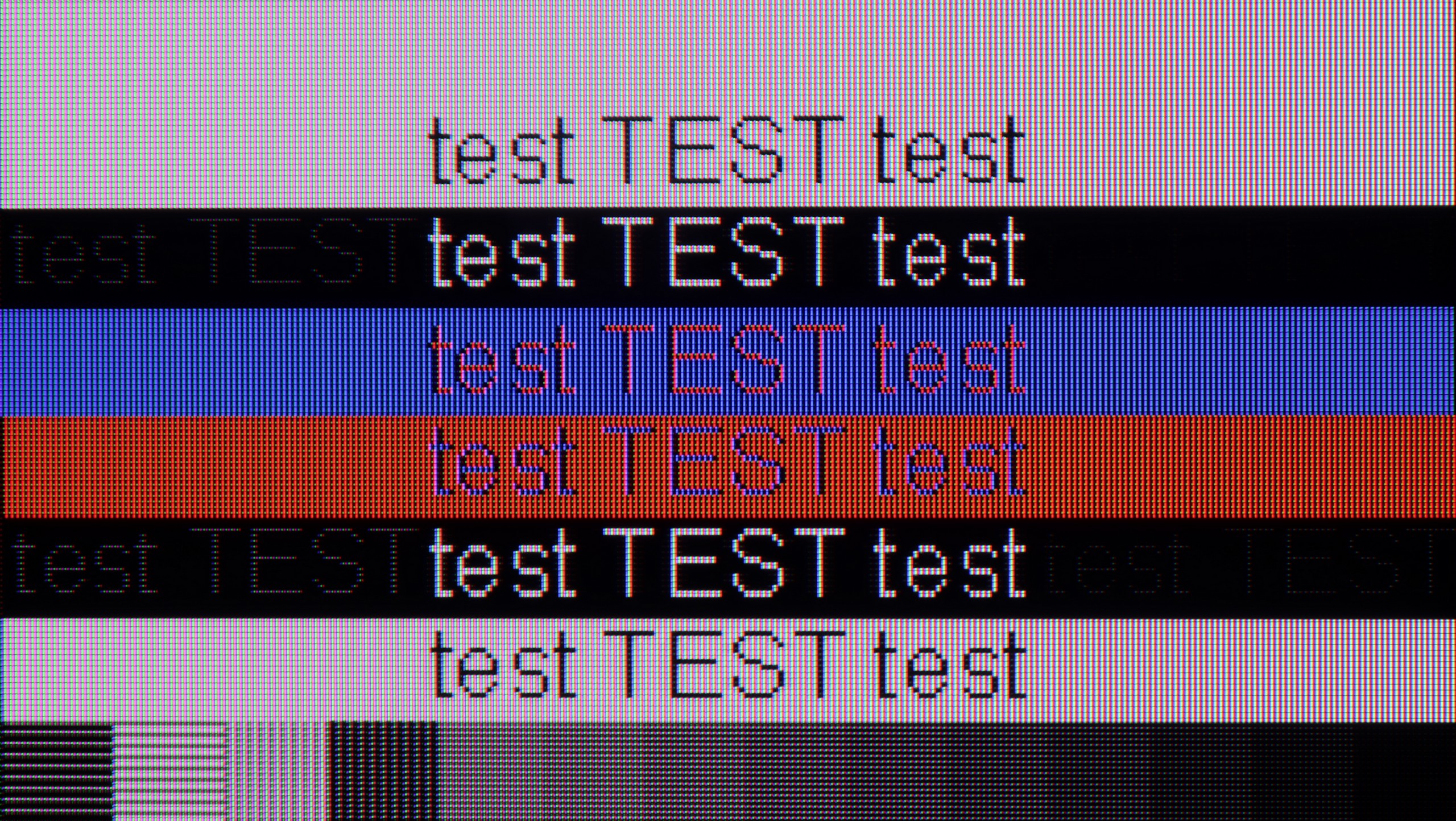
The U7Q communicates excellently with the computer. For gamers, this is great news – we have high refresh rates, low input lag, and G-SYNC support, making gameplay from a PC pure enjoyment. But the U7Q also performs well in everyday tasks. If someone uses the computer for word processing, browsing the internet, or office work – there’s nothing to complain about. The TV correctly handles chroma 4:4:4, so fonts look sharp and clear, without blurriness or odd contours. Both small and capital letters are simply readable – just as it should be.
A new feature of this year's model is the full support for 144 Hz refresh rates, which PC gamers will appreciate. The QNED93A works with both Nvidia graphics cards, offering compatibility with G-Sync, as well as with AMD products, where it operates with FreeSync Premium Pro. As a result, gameplay is smooth, without stuttering or tearing, and the panel itself performs very well in dynamic esports titles and demanding AAA productions.
Equally important is the clarity of the image for daily work. The television supports chroma 4:4:4, so fonts in Windows and applications are sharp and clear. However, we noticed a small detail – against a dark background with bright letters, subtle horizontal stripes may appear, resulting from the arrangement of subpixels. This is a minor detail that does not affect the convenience of using the television on a daily basis, but perfectionists might notice it after prolonged exposure to text. But we don’t think anyone would want to work on a 55-inch screen with text sitting less than 1 meter away from it 😉.
Viewing angles
3/10
2.9/10
The viewing angles on the U7Q are rather poor – this is simply characteristic of VA panel qualities. Directly in front, everything looks very good: blacks are deep, colours are saturated, and contrast is high. However, just moving slightly to the side causes the picture to start losing quality – colours become washed out, and blacks begin to resemble dark grey. Compared to televisions with IPS panels, the U7Q performs worse, although on the other hand, it makes up for it with better contrast and deeper blacks.
QNED93A uses a VA panel, which means one thing: the category of viewing angles becomes its Achilles' heel. Already at an angle of about 45 degrees, brightness drops by as much as 80%, and colours begin to noticeably fade. This is the natural price for the high contrast that VA panels offer. There is no additional coating to enhance angles here, as in some more expensive models, which is why the QNED93A performs best when viewed head-on. If you are planning a large family screening where some viewers will sit more to the side, you must take into account that the picture will not be as attractive as it is in the centre of the screen.
TV efficiency during daytime
6.2/10
6.2/10

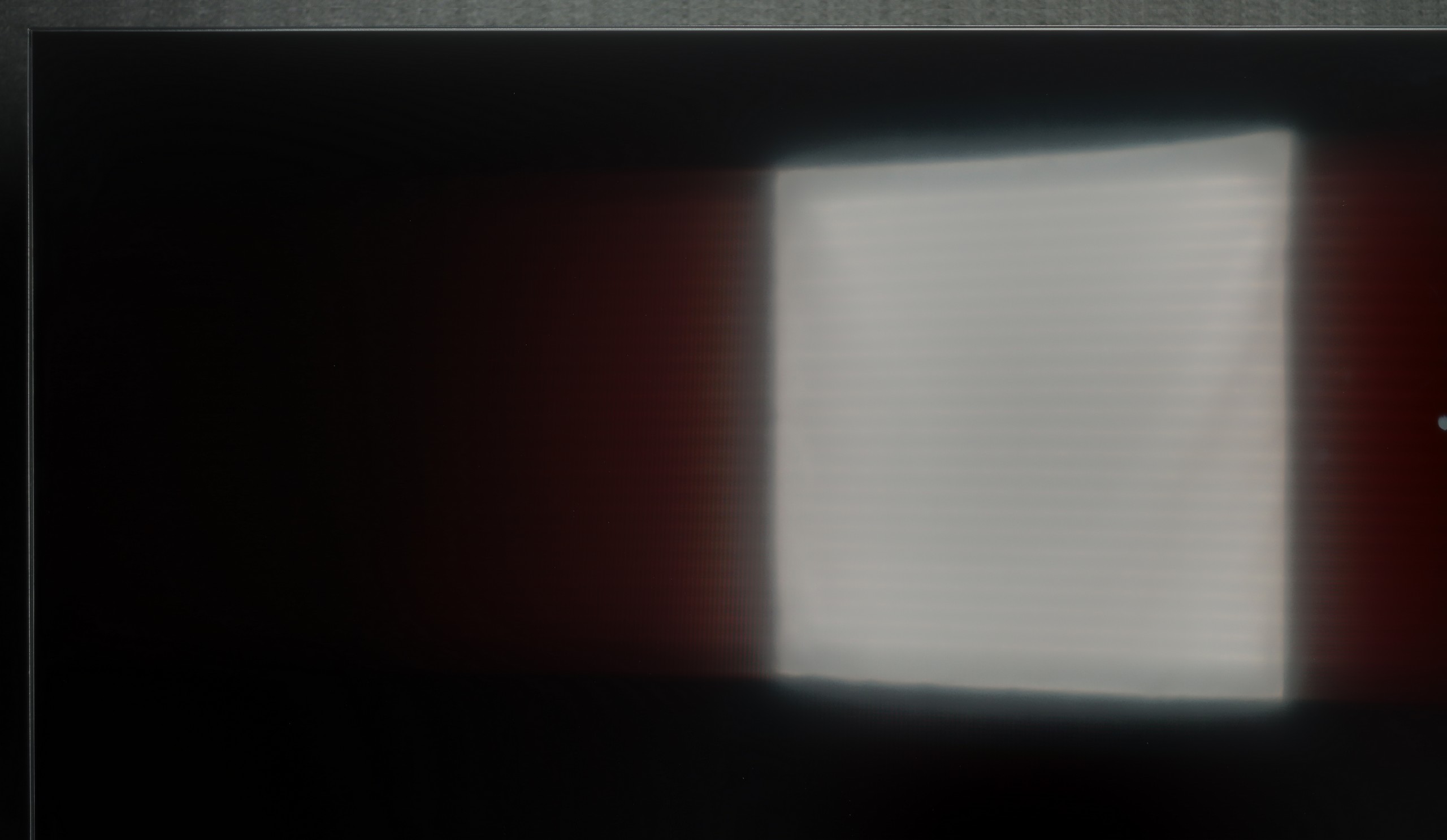


Matrix brightness
Average luminance SDR
LG QNED93A / QNED90A: 546 cd/m2
Hisense U7Q: 519 cd/m2
The U7Q performs quite well in a sunlit room. The brightness in SDR mode averages around 520 nits, which practically means that even on a sunny day, it is easy to comfortably watch television – without the feeling that everything is drowned in reflections. Additionally, thanks to the satin coating on the panel, the television does a good job of suppressing reflections.
LG QNED93A uses a satin matrix, which handles glare suppression moderately well. It is certainly not on the level of matte screens, but it does not have the mirror-like surface feel of models with a glossy finish. As a result, reflections are not overly distracting, and the colours maintain their intensity even when light from a window strikes the screen. The brightness also scores positively. The average level in HDR mode hovers around 550–600 nits. This means that the television performs well in well-lit rooms, allowing viewers to enjoy a film even during the day, with the blinds only partially drawn. In the role of a large screen in the living room, the QNED93A performs quite well.
Details about the matrix
Subpixel Structure:

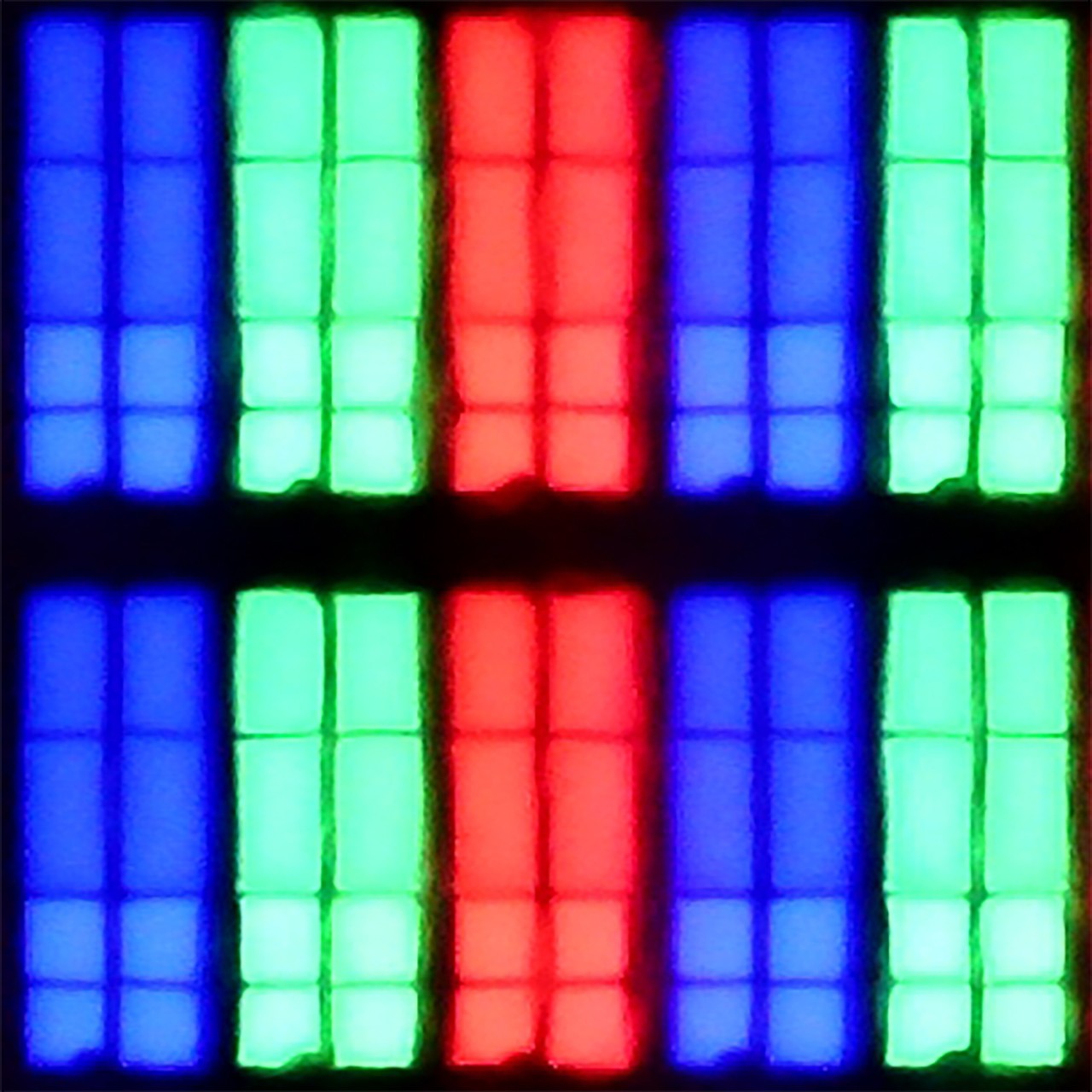
Panel uniformity and thermal imaging:

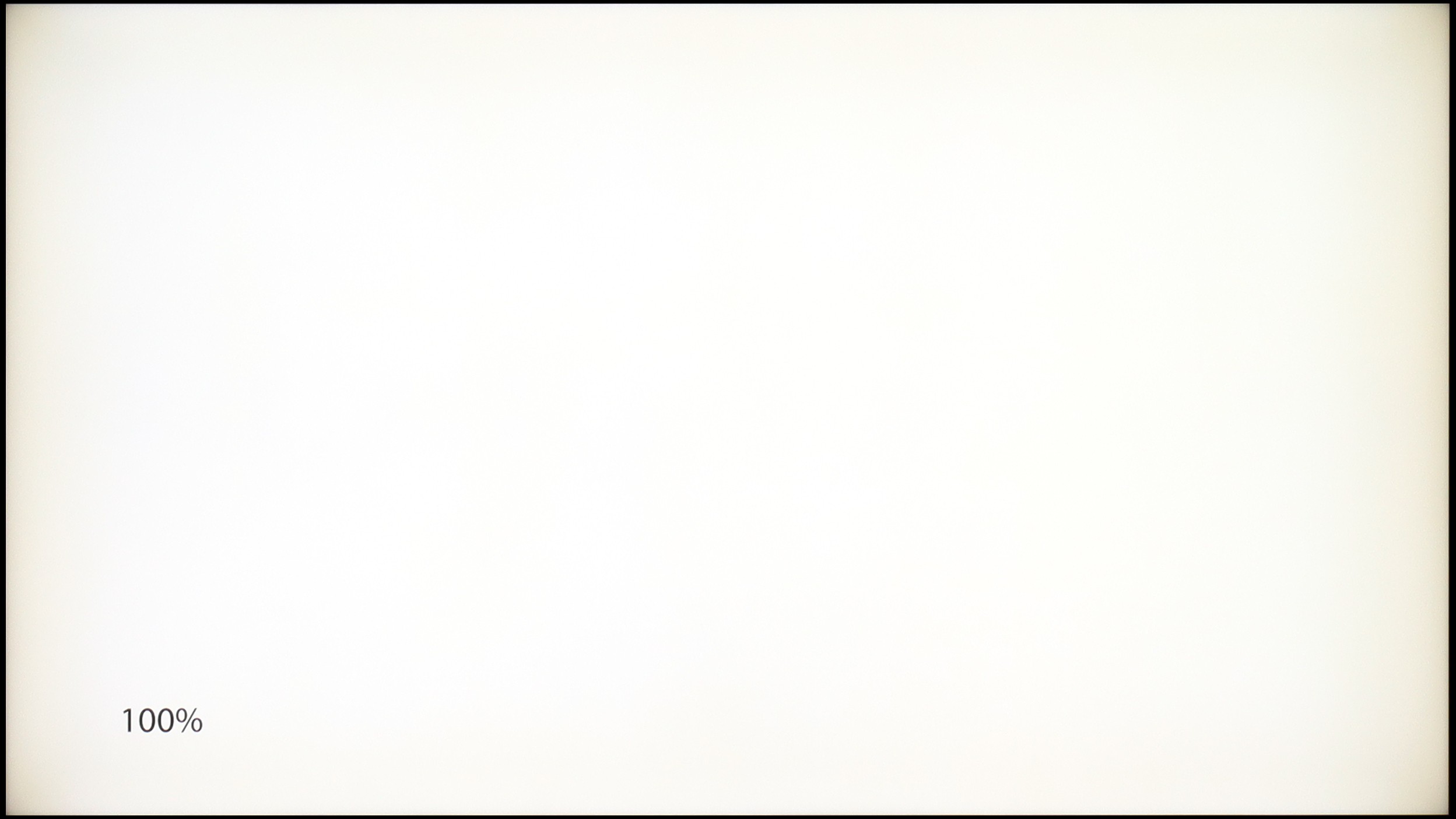
Hisense U7Q
LG QNED93A / QNED90A
TV features
8.9/10
8.2/10
- HDMI inputs2 x HDMI 2.0, 2 x HDMI 2.1 48Gbps0 x HDMI 2.0, 4 x HDMI 2.1 48Gbps
- Other inputsRCA (Chinch)
- OutputsToslink (Optical audio), eARC (HDMI), ARC (HDMI), Mini-Jack (Headphones)Toslink (Optical audio), eARC (HDMI), ARC (HDMI)
- Network InterfacesWi-Fi 2.4GHz, Wi-Fi 5GHz, Ethernet (LAN) 100MbpsWi-Fi 2.4GHz, Wi-Fi 5GHz, Ethernet (LAN) 100Mbps
- TV receptionDVB-T, DVB-T2, DVB-S, DVB-S2DVB-T, DVB-T2, DVB-S, DVB-S2, DVB-C
Classic features:
- Recording to USB (terrestrial TV)
- Recording programming
- Picture in Picture (PiP)
- RF remote control (no need to aim at the screen)
- Backlit remote control
- Teletext
- Audio only mode
- Bluetooth headphones support
- Simultaneous Bluetooth headphones & TV audio
Smart features:
- AirPlay
- Screen mirroring (Windows Miracast)
- Voice search
- Voice search in native language
- Ability to connect a keyboard and mouse





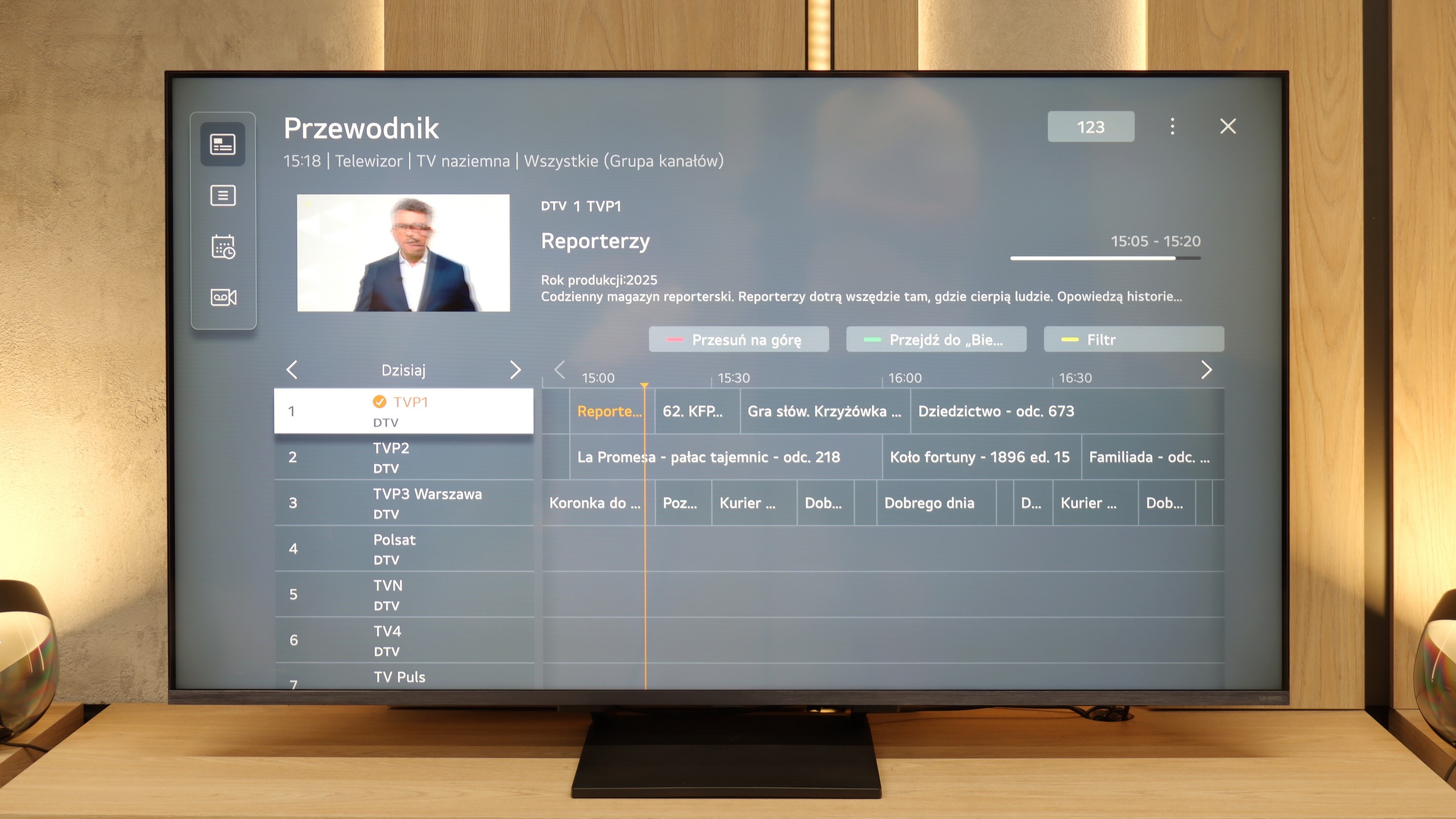
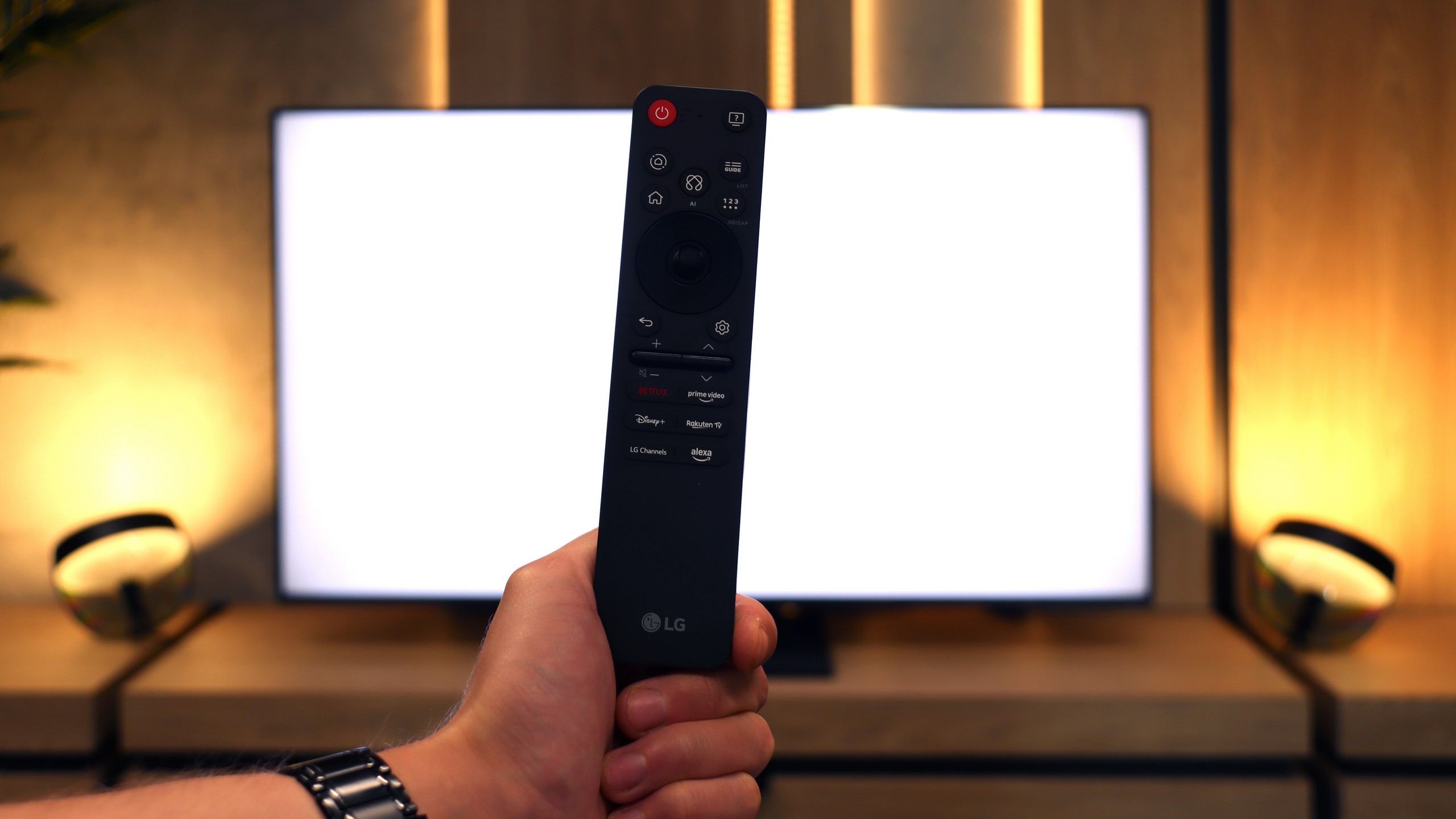
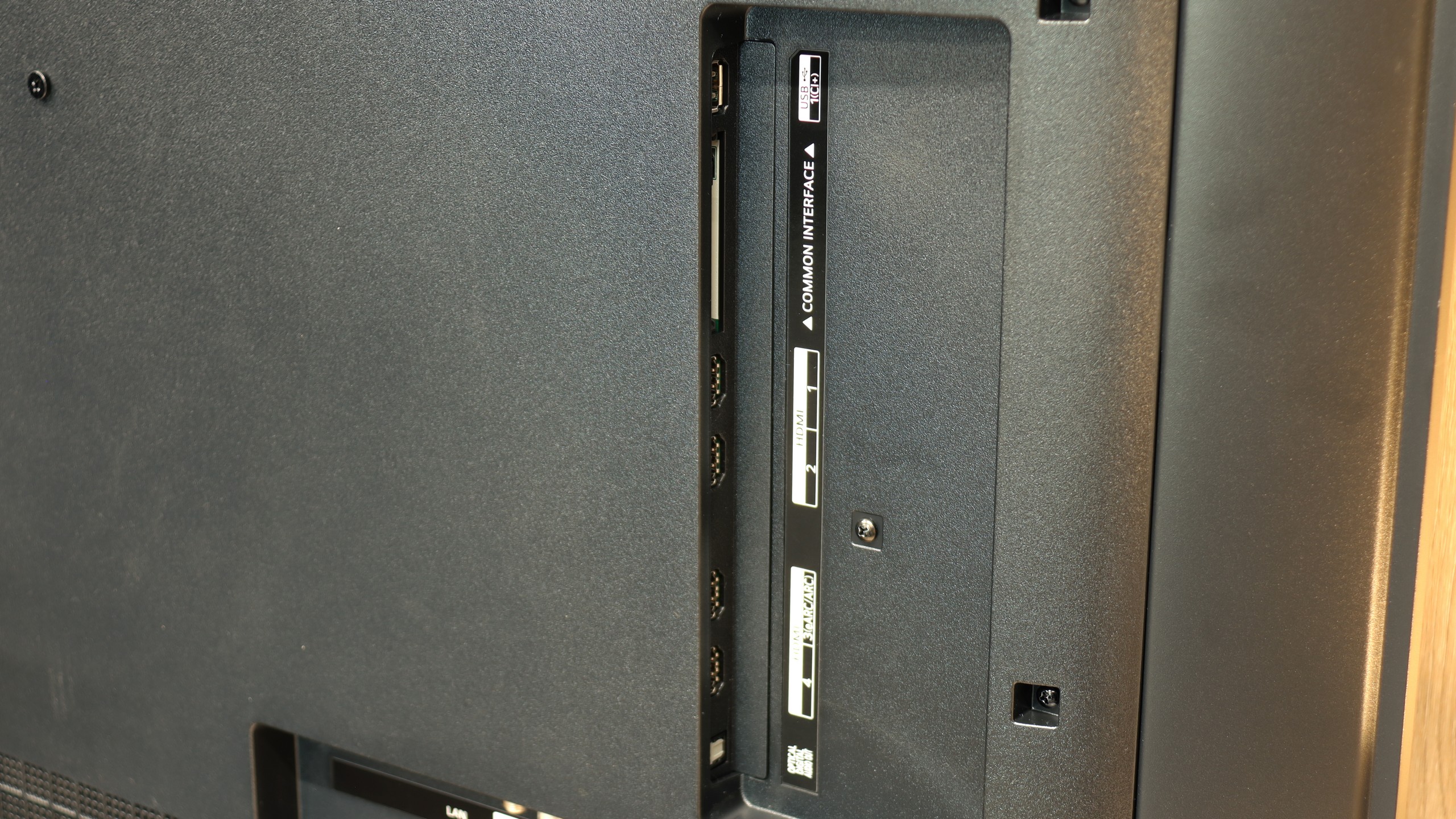
Classic features of U7Q
Hisense U7Q has quite a lot to offer when it comes to classic TV features. You can record programmes to USB, connect external devices via Bluetooth without any hassle, and the interface – such as the EPG – is clear and easy to read. It may sound like something mainly appreciated by seniors, but the truth is that U7Q has practically everything needed for watching traditional television. The only thing missing here is the PiP (picture-in-picture) feature.
Smart TV U7Q: Vidaa
As for Smart features, the U7Q runs on the proprietary VIDAA system. And it must be admitted – it operates really smoothly. Voice search in Polish? No complaints. AirPlay and screen mirroring? They work without any issues as well. Of course, one must be aware that VIDAA is a closed system, so – as is often the case – it lacks some popular applications, especially those related to music. Therefore, before purchasing, it is worth checking whether all the applications you use regularly are available.
Smart Features
The QNED93A runs on webOS, which is one of the most enjoyable Smart TV systems. It comes with AirPlay, Screen Mirroring, Chromecast, and convenient voice control. The platform is quite clear and mostly fast, although in the tested unit, there were instances where the response to pressing the remote control required a moment of "thought". However, it's hard to consider this a serious issue – webOS still remains a refined system and will likely receive further updates that will enhance it even more.
Classic Features
In this model, LG has not included the old Magic remote with a numeric keypad, but the television itself performs excellently as a screen for everyday viewing of channels from the antenna. The EPG interface is readable, the television offers a TV guide, and we have the ability to record programmes from the built-in tuners directly onto a USB stick. Everything works correctly and intuitively. We only missed the PiP feature, which in 2025 is offered by just two manufacturers.
Magic Remote
The Magic remote is still the biggest difference compared to competitors. In 2025, it underwent a slight facelift – it has fewer buttons and resembles the minimalist remotes from Samsung. However, the cursor remains key, functioning like a magic wand. Just move your hand, and the pointer on the screen follows your movement. It's incredibly simple, yet very convenient. Navigation in the menu or entering passwords is much faster, and it's difficult to then switch back to traditional buttons.
Playing files from USB
8.2/10
8.8/10
Supported photo formats:
Maximum photo resolution:

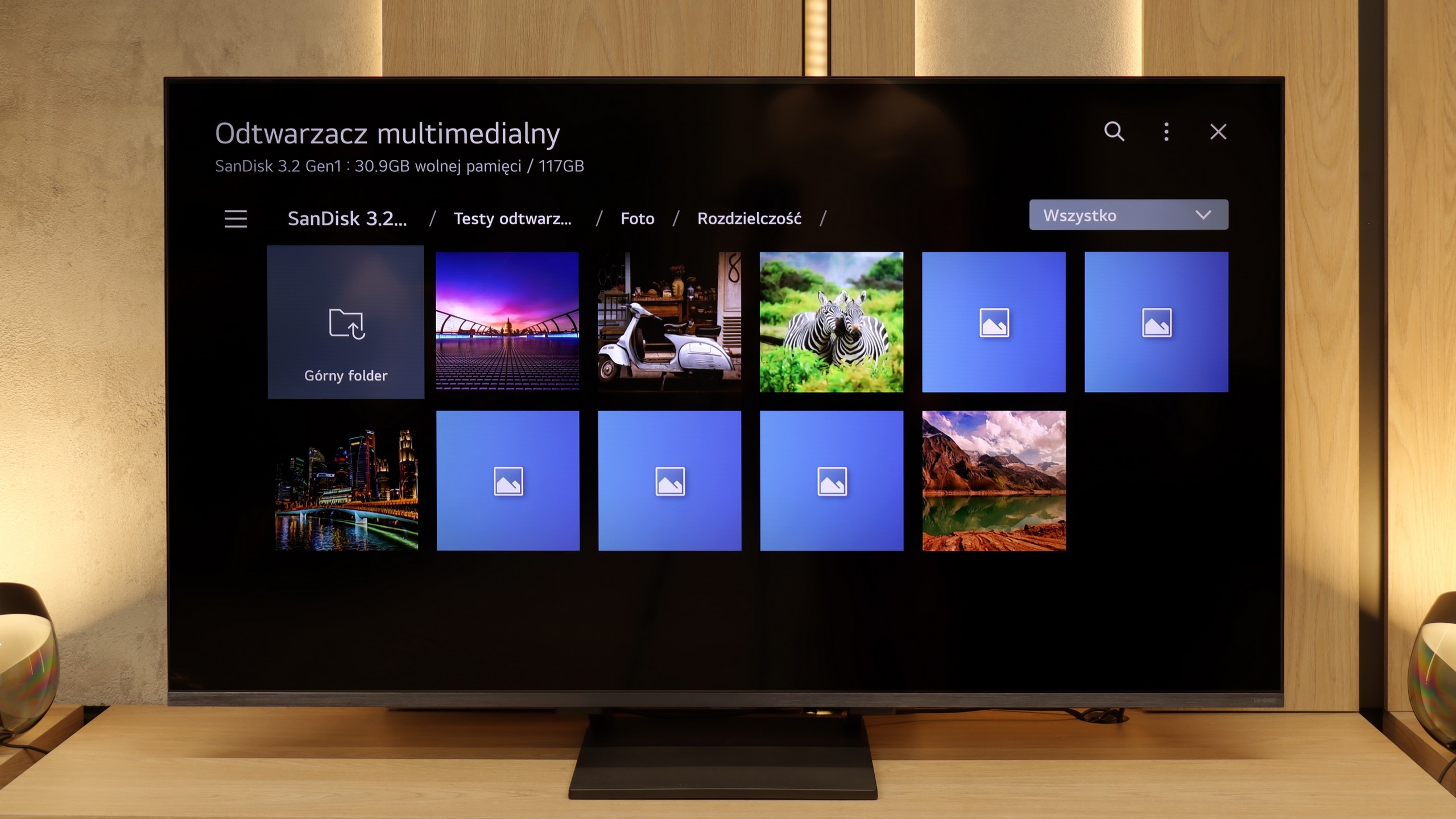
The built-in player in the U7Q fully meets the needs of most future users. The television handles Polish characters effortlessly and supports most popular video, audio, and image formats. If we had to nitpick, it would only be about the limited support for certain image resolutions – there are instances when files from a camera are not displayed correctly. So it's worth keeping this in mind if you plan to present photos straight from a DSLR or phone.
The built-in media player in the LG QNED93A handles most popular video and audio formats without any issues, so it is quite sufficient for basic use. However, during testing, we noticed two minor oversights. The first is the lack of support for HEIC files, which is Apple's photo format. The manufacturer claims that the television should be able to open them, but in practice, we were unable to confirm this. The second issue concerned text files with subtitles in TXT format. Fortunately, the other more common subtitle formats worked without any problems, so it's hard to consider this a real limitation in everyday use.
Apps
7.7/10
9.1/10














































Sound
7.2/10
6.9/10
- Maximum volume82dB81dB
- Dolby Digital Plus 7.1
- Dolby True HD 7.1
- Dolby Atmos in Dolby Digital Plus (JOC)
- Dolby Atmos in Dolby True HD
- DTS:X in DTS-HD MA
- DTS-HD Master Audio
Sound is one of the bigger advantages of the U7Q. The television sounds really pleasant – there is a slightly noticeable bass, good tone balance, and definitely something more than just for "daily news watching." You can easily play music on it and simply sit back and enjoy the sound – of course in an entertaining form, not an audiophile one 😉. Full support for the most important audio codecs also deserves a big plus, as they worked flawlessly. A small exception is Dolby Atmos in TrueHD version, which didn’t fully play when connected to the home cinema, so if someone uses this format – it’s worth keeping in mind – it might be a software issue.
The LG QNED93A sounds quite pleasant for built-in speakers in a television. The sound quality is fairly clear, and at medium volume levels, vocals and dialogues come across clearly. The bass, as is often the case in relatively slim designs, is not the strongest, but its presence can be heard and is entirely sufficient for everyday viewing of series. The maximum volume reaches around 81 dB and does not lead to strong distortions, although during more demanding cinematic scenes, it's evident that the system has its limitations. Overall, the sound can be described as decent and not off-putting. It certainly won't compete with a soundbar, but it won't ruin your film experience either.
Acoustic Measurements
82dBC (Max)
75dBC
81dBC (Max)
75dBC


